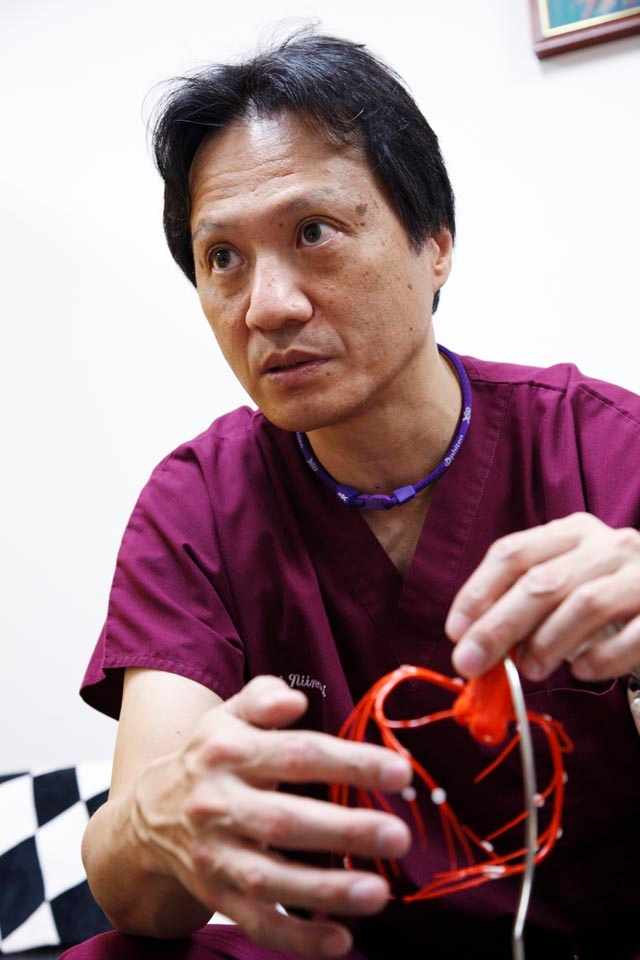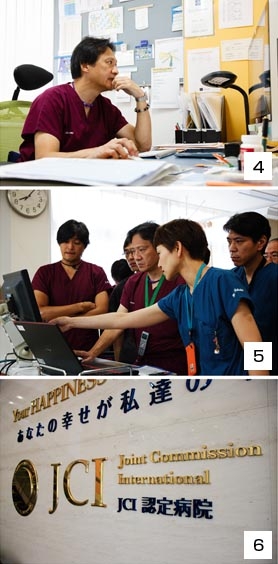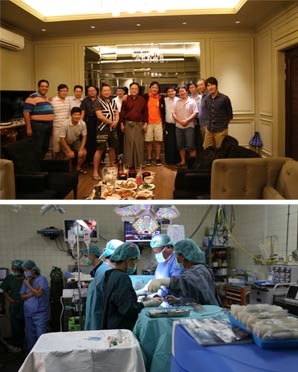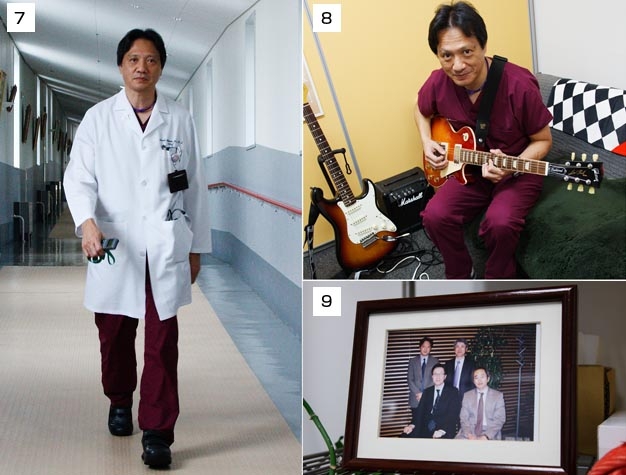Dr. Hiroshi Niinami (Cardiovascular surgeon)
Coronary Artery Surgery
The Art of Mastering Heart Operations for Longer Lasting Healthy Hearts
70% of Bypass Operations in Japan are Off-Pump

Dr. Hiroshi Niinami
(Cardiovascular surgeon)
Why is it that “Japan is the most advanced country in the world for off-pump coronary bypass operations,” as Dr. Niinami declares?
There are three main methods of treating angina (when the coronary artery narrows) and heart attack (when the coronary artery is blocked): drug therapy, coronary artery catheterization or coronary artery bypass. A coronary artery bypass is performed in cases where attacks cannot be controlled by drugs, constriction in the coronary artery is difficult to reach with catheterization, there are risks associated with catheterization, or there is narrowing in more than one location. Another blood vessel is used as a graft to create a detour, or bypass, to restore blood circulation to normal. It used to be standard procedure to temporarily stop the heart and use a heart-lung machine, essentially a pump, to artificially perform the functions of the heart and lungs to circulate blood throughout the body while performing the bypass. However, in Japan 70% of these operations are now performed using the so-called off-pump method, which is performed with the heart still beating, using an instrument called a stabilizer to inhibit vibrations in the sections being sutured. The greatest merit of this procedure is that the physical strain on the patient’s heart and body is greatly reduced, leading to a faster postoperative recovery. Although heart-lung machines are extremely safe, it cannot be denied that stopping the heart and putting a patient into a state of suspended animation for a long period inflicts damage on their body.

2&3. The white-gloved hand shown (photo No.2) is lifting up the gastroepiploic artery to be collected from a patient’s stomach. Using this for a graft can give a patient over ten extra years of life. “I want certainty and care. Not speed,” says Dr. Niinami. He never lets his attention slip for even a second in his quest for quality.
Despite its Merits, the Off-Pump Method is Barely Used in the West
The second reason is that inexperienced surgeons who tackle off-pump surgery are lowering favorable outcomes. “Off-pump procedures are difficult for young surgeons who haven’t racked up experience with multiple operations, so it’s no wonder they don’t perform well with them. But even in the West, hospitals that specialize in off-pump surgery are getting fantastic results and outcomes.”
The third reason is that in Japan bypass surgery is only performed on the most severely affected patients. “In the UK, for example, the ratio of bypass surgery to catheterization is 1:3. Bypass surgery is performed on even mildly affected patients. In Japan the ratio is 1:14. There’s a tendency to perform catheterization as much as possible because reducing the strain on the patient is the number one priority. Then again, this means that those patients who undergo bypass surgery in Japan are in a much more serious condition than most of those in the UK. Because bypass surgery is chosen as the last resort for patients in a serious condition, who may be elderly or have other complications, it’s only natural that the safer off-pump procedure should be chosen.”
A focus on off-pump coronary bypass surgery is the outcome of giving a high priority to reducing physical strain on the patient and pursuing a high level of expertise.


